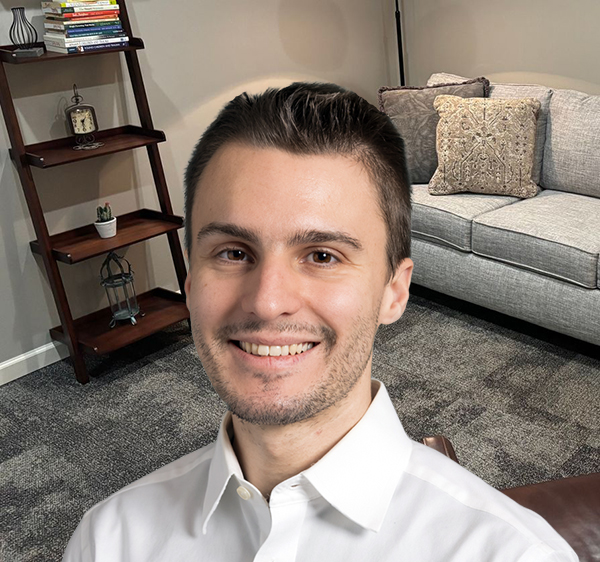If you’ve spent any time in the chronically online mental health space, there’s a chance you’ve heard of mindfulness. Perhaps you’ve encountered the litany of meditation apps, reminding us, at pre-determined intervals, to slow down, breathe, and “protect your peace.”
Indeed, mindfulness has in recent years – in more placid terms – exploded. And not for trivial reasons. Plenty of research appears to support the mental and physical benefits of mindfulness and meditation, often pointing to how mindfulness can reduce cortisol, a key hormone involved in the stress response.
And yet, despite its scientific backing, much of the content emerging from mindfulness appears vaguely mystical, having been quickly snatched up by the self-help space, which loves nothing more than to conceal everyday humanity and banal platitudes in a seductively elusive, profound air. And it’s quite a shame considering that mindfulness is quite useful, even apart from the grandiose claims which so often accompany it.
What is Mindfulness?
If we remove the excess, mindfulness is simply a state of mind which we intentionally occupy, where we observe our internal and external experience. In a mindful state, we attend, consciously and deliberately, to our five senses, our thoughts, our feelings, and any experience that arises in the present moment. In a state of mindfulness, we attempt to occupy this present state of awareness and observe our conscious experiences as a non-judgmental observer. While this might sound like how we behave normally, one of the great revelations of mindfulness is that this is, in fact, not the case.
Indeed, if we truly pay attention, we realize that much of our conscious experience is informed by our unconscious: without choosing to, we find ourselves thinking about the past, the future, or conjuring up imaginative realities involving our hopes, worries, anxieties, or fears. Thoughts and emotional experiences arise in conscious experience, like a projector casting a movie onto a curtain. But what is missing from this state of existence is agency. Normally, we experience those thoughts not as the antecedent to them, but as the consequent.
In a mindful state, however, we recognize that while we cannot necessarily choose our thoughts, we can choose to operate our attention as a quality capable of being wielded. As thoughts emerge, we can approach them with curiosity, noticing them while keeping ourselves rooted in the present. We can acknowledge an anxious thought, for example, as something that emerged into our conscious mind at a singular point in time. We can notice its intensity, where it might have come from, and where we felt it in our body. We can then allow it a moment to fill our conscious space, paying respect to its fullness, and then we can release it, like leaves to be carried by the wind. The idea here is to notice thoughts, emotions, and sensations as experiences that are separate from the totality of us, rather than becoming blended or encapsulated within them. In this sense, a mindful observation might be: “I just had an anxious thought,” as opposed to “I am anxious.”
Within this practice lies a certain kind of power: the power not to control our thoughts, but to experience our thoughts without being carried away by them. Without realizing it, we can spend much of our lives avoiding: running from painful emotions, distressing thoughts, and uncomfortable truths. Avoidance can become a sort of prison, where we have to constantly create distance between ourselves and our thoughts, suppressing things we don’t want to think about, keeping ourselves distracted.
What mindfulness offers is not a profound fix, but an opportunity to experience a stark contrast to this avoidance: a chance to move through rather than around. To accept rather than look the other way. Sustained mindful practice is nothing more than a gradual effort to build comfort in one’s own body and the present moment without all the internal pressure to control or curate our experience. And, in that sense, mindfulness is pretty cool.
A Mindfullness Activity to Try
If you’re interested in mindfulness and would like to try a straightforward mindful activity, see below!
- A common place to start with mindfulness is with the breath. Close your eyes and take a couple of deep breaths, inhaling through your nose and exhaling through your mouth. Don’t try too hard to control or restrict it. Inhale slowly until you reach a point of feeling comfortably full, and then exhale without forcing the air out. A good guide to slow, deep breathing is to inhale while counting to four and then exhale until your body tells you it is time to take another breath. It may take some time to find a proper rhythm. This is okay. Mindfulness isn’t about doing it “correctly.” It’s just about participating in the experience. If you find yourself experiencing negative thoughts or like you’re testing this experience for its effects, simply notice those thoughts and then allow them to subside as you return to the breath.
- Once you find a comfortable breathing pattern, descend into your chest and notice any sensations there. Any tightness? Feelings of warmth or coolness? Any pain or discomfort? If so, see if you can’t describe the sensation like a scientist collecting data. Is it a sharp feeling, or is it more diffuse? What are the boundaries of this sensation? See if you can’t draw a shape around it.
- Notice any thoughts that emerge here that want to protect you from this experience. If you feel uncomfortable or too anxious, be kind to yourself and return to what you were paying attention to when you felt better. Maybe that’s the breath for right now. Inhabit the space where you are for a few minutes. Notice any changes or shifts.
- Depending on your level of comfort with being present in your body, you can choose from two different paths to try next, if you’d like to continue.
- If you feel curious about this experience and want to expand your bodily awareness, try to spread your awareness to hold even more experience. As you continue to breathe deeply, allow your field of attention to widen, as you take inventory of your entire body. Allow yourself to notice any sensation that occurs anywhere in your body. If you like, you can imagine taking a scan of your body, from top to bottom. Spend a bit of time in each region: face, jaw, neck, shoulders, chest, arms and hands, abdomen, and your sit bones. Notice anything there is to notice. If you notice any areas of tightness or tension, try to relax them, allowing the breath to perfuse these areas, like a healing ocean wave. If you find yourself getting tired or feeling taxed, you can stop at any time.
- As you continue to breathe deeply, expand your awareness to include the room you’re in. Consider each of your senses as relevant. What can you see? Describe these things, aloud or in your mind, perhaps in terms of their color. Notice even the things you normally take for granted. What can you hear? Do you notice anything you weren’t paying attention to before? What can you feel on the surface of your body? Any sensations of warmth or coolness? Prickliness, or soreness? Allow gravity to pull you down into the surface you’re sitting on, and allow yourself to feel rooted to this space. Any smells? Maybe a blanket or a pillow in the room that you can hold up to your nose? What’s that like? Does it remind you of anything?
- For a moment, allow all of these things to exist simultaneously: the breath, the sensations, the thoughts, your environment. Without restricting it in any way, let your attention be drawn wherever it’s pulled, but notice that it’s happening. Notice how you don’t choose where your attention is placed. Notice how it’s pulled along, as if by a string, by each new experience. Follow along, allowing yourself to be surprised at what your mind finds.
- And when you’re ready, take a deep breath, open your eyes if they are closed, and give yourself a mental pat on the back for doing a difficult thing. Whether it was easy or hard – comfortable or uncomfortable – you experienced something a bit different!
This blog contains the views of Alex Thomson and is intended as educational content. It is not a replacement for therapy or formalized diagnostic assessment. Read full Disclaimer.
Alex Thomson is a licensed associate professional counselor in the state of Georgia and a certified trauma professional. He provides counseling services through Exhale Counseling Services in Acworth. He is supervised by Jennifer Wells, LPC, CPCS [LPC: 008961, CPCS: 4183].


